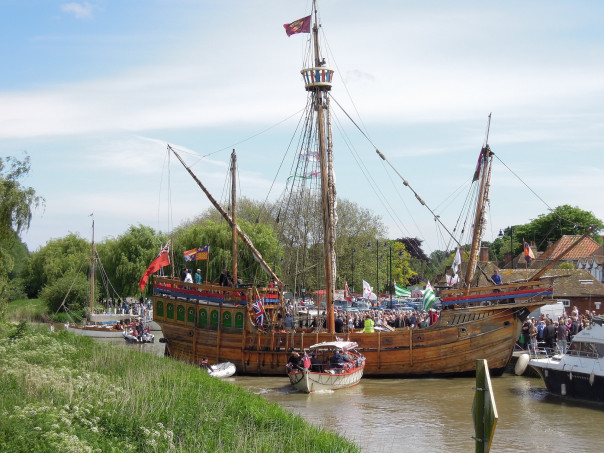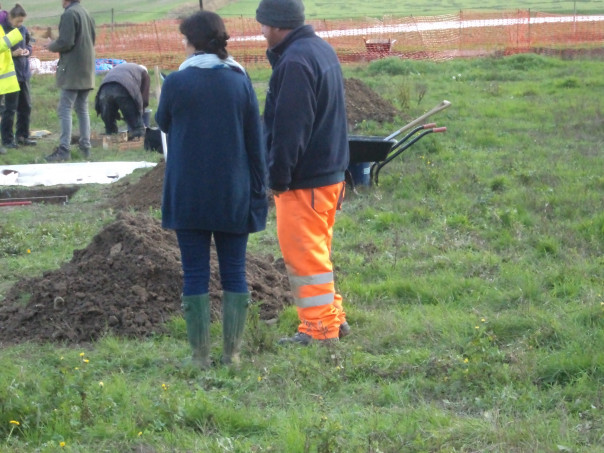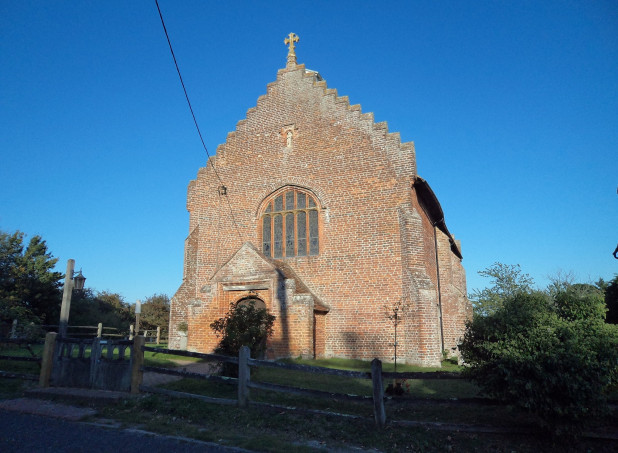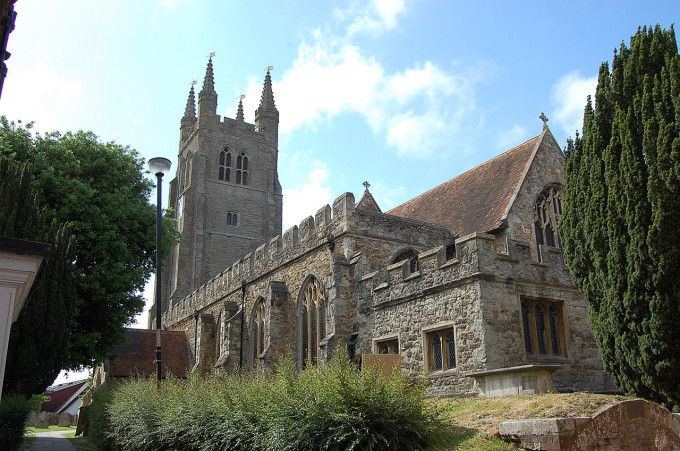For the benefit of those reading the blog for the first time as well as a reminder to regular readers, the next CKHH event will be on Tuesday, so please see below.
I am absolutely delighted to say that Professor Alan Stewart, currently Visiting Professor at Queen Mary University of London before he returns at Christmas to Columbia University where he is Professor of English and Comparative Literature, will be coming to Canterbury on Tuesday 21 November to give a lecture entitled ‘The First Coming of the Strangers: An Experiment in Elizabethan Immigration’. This will be at 5pm and take place in the Michael Berry Lecture Theatre, Old Sessions House on the CCCU Canterbury campus. As Professor Stewart says, “In 1561, the town of Sandwich in Kent petitioned the Privy Council to allow a significant influx of immigrants to settle in their town, and practice their skills working with ‘says, bay and other clothe’—a model that was to spread across the south-east of England. Within six years, immigrants in Sandwich outnumbered the previous inhabitants, provoking a predictable backlash. While this immigration is often claimed as a masterstroke of state policy to introduce artisanal skills lacking in England, my paper explores it as a multi-faceted experiment, of importance not only to trade, but also to social relations, religion, education, and the period’s literature.”

This is an exciting opportunity and as well as staff and students from CCCU, we will be welcoming the MEMS community from the University of Kent as well as members of the public to hear Professor Stewart’s presentation. This is a FREE lecture; booking is not necessary, and we shall look forward to welcoming you to what promises to be a fascinating talk.
Now for this week the blog will come in two parts, this evening will be a report on the Lossenham Project wills group meeting at Lossenham earlier today, while the second, which I’ll aim to do on Sunday, will be a report on Dr Diane Heath’s Medieval Animals Heritage ‘Beastly Latin’ Saturday at Canterbury Cathedral Lodge.
So for today, although we were slightly depleted in terms of numbers, the wills group gathered at the Lossenham farmhouse for our monthly meeting (every fourth one being in person). As it was wet, albeit it did get far wetter later in the day, I think there was a general feeling that we had chosen the far better option than the archaeologists who were out in the rain! Thus, having sorted out the dates for the next couple of meetings, we turned to the standing item on the agenda, that is any matters anyone wished to raise about the group’s ever-expanding database of information taken from the probate materials of our project’s parishes. Generally, there was an agreement that this was all on track. One point that Jason raised was that in terms of the transcripts/translations, which sit in the holding file before the data from them is entered on the database, it would make searching easier if as a group there is a set labelling pattern. This people felt was a sensible suggestion and the agreed pattern will be adopted going forward and Jason, when he has time, will relabel earlier wills where it is different.

This brought us onto the point of information that Sue M has very kindly set up a folder called ‘Requests for data’ which contains the agreed forms which means we now have a system people are happy with and all now know how to proceed. Keeping with the importance of communication, there was general agreement that it made sense for the wills group to have a WhatsApp group which will offer a quick way, for example, to highlight any transcription queries anyone has.
Moving on, several members of the group provided information about their forays into the Kent Archives concerning non-probate materials. Sue H is looking at the De Lisle manuscripts, more on that another time, while Jason mentioned that he had found the ‘behind the scenes’ tour of the archives exceedingly informative. Furthermore, he had seen the Matthew Poker map of 1617 showing the waterings on Romney Marsh. This is an extremely detailed and fascinating map, and while not of our study area may offer ideas about land use and maintenance for the Rother Levels. If anyone is interested in Matthew Poker, do see the petitions project: https://petitioning.history.ac.uk/investigating-petitioners/1617-matthew-poker-supported-by-his-mother-and-grandmother-asks-for-release-from-dover-castle/
Keeping with the Romney Marsh area, it is similarly worth noting that the material produced in the past by the Romney Marsh Research Trust is now available again through the Kent Archaeological Society (KAS) website at:

An associated topic was the subject of a recent doctoral thesis by Toby Hrynick, supervised by Professor Maryanne Kowaleski at Fordham University, and this, too, will be valuable for group members in terms of understanding more fully how the marshland drainage system was maintained by the land users of the area. From this we moved on to exploring further resources on landholding and another doctoral thesis that Maureen alerted us to is by Imogen Wedd who used the Somerden Hundred as her case study to investigate gavelkind and the land market in the early modern period. This thesis is available through the British Library EThOS scheme and she has also published an article on gavelkind in the 2021edition of Archaeologia Cantiana. Such gathering together of secondary as well as primary resources is extremely useful.
Our next agenda item was a report by Rebecca, aided by Sue M, of the recent findings by the archaeologists. This might be said to centre on three main periods. Working chronologically, evidence of a cremation burial from the mid Bronze Age has been located that was cut by a later wall. Next, there is evidence of iron working in the form of a bloomery from the late Iron Age and more expert analysis of the iron slag will be done on this. Then moving into the Middle Ages, some preliminary analysis has been undertaken on the skeletal remains found within the ‘friary’ church. Again, more on this when the results of the various tests are known but all highlight the presence, but not continuity, of human activity on site since prehistoric times.
As always, the group is keen to think about the best way to go forward. Of course, work on the probate materials is the ongoing key activity but we are also keen to find ways to disseminate our collective research. At the moment until the Lossenham Project website is active again our outreach is directed through Sue H and her activities on behalf of Tenterden Museum and allied projects linked to Rolvenden and Benenden. I’ll just mention a couple as examples to give a flavour of these exciting developments. Firstly, there is the ‘Talking Heads’ project which will use Robert Brekynden and his shipbuilding activities as a prototype. This draws on Keith’s research into Robert and the family more widely, as well as deploying the published work of Dr Rob Lutton and contextual material concerning Tenterden, Small Hythe and Portsmouth. Assuming this goes well, and there seems no reason why not, other ‘talking heads’ may include Robert’s wife, that of a child growing up in the area and others, such as a butcher, clothier and a tanner as a way of highlighting the trade and craft activities that took place in Tudor Tenterden.

Other projects will include producing Key Stage 2 teaching materials, but as anyone who has worked on late medieval wills will know, these materials are great sources for ideas about parish religion. Consequently, there are several projects based around Tenterden and Rolvenden churches where the wills are key sources – regarding the interiors of these churches in the form of altars, images etc, how they were used such as the serving of temporary and permanent chantries, the presence or otherwise of pews and just who and which families were the key supporters, at least in terms of bequests. Furthermore, it is planned to extend this over the Reformation period to demonstrate how and what changed, and even more importantly – why, thereby offering insights into the theological debates of the time and the impact on the parishioners and their incumbent of the succession of changes.
This all meant that we concluded our meeting after some interesting and fruitful discussion after ninety minutes and we then retired to the kitchen to enjoy a hearty lunch. Not that all discussion about probate materials ceased and it is great to witness the enthusiasm displayed as this group of volunteers as they go from strength to strength.
 Centre for Kent History and Heritage
Centre for Kent History and Heritage Sheila Sweetinburgh
Sheila Sweetinburgh 1267
1267

